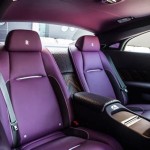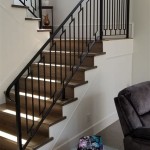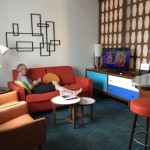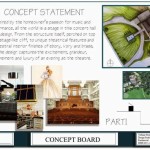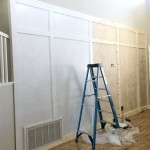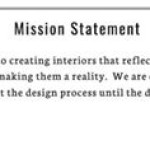Types of Modern Interior Design Styles
Modern interior design encompasses a diverse range of styles, each with its own distinct characteristics and aesthetic principles. Understanding these different styles can help homeowners and designers create spaces that reflect individual tastes and preferences. This article explores several popular modern interior design styles, highlighting key elements and inspirations.
Mid-Century Modern
Mid-century modern design, popularized from the 1930s to the mid-1960s, emphasizes clean lines, functionality, and organic forms. Natural materials like wood and leather are prominent, combined with synthetic materials such as plastic and fiberglass. Color palettes often feature earthy tones, muted hues, and pops of vibrant color. Furniture pieces are typically low-profile and streamlined, with an emphasis on both comfort and practicality.
Minimalism
Minimalist design prioritizes simplicity and functionality, stripping away unnecessary elements to create a sense of calm and spaciousness. Color palettes are typically neutral, featuring shades of white, gray, and beige. Furniture is often geometric and unadorned, focusing on essential pieces and avoiding clutter. Natural light is maximized, and storage solutions are integrated seamlessly into the design.
Scandinavian
Scandinavian design emphasizes functionality, simplicity, and connection with nature. Light and airy spaces are prioritized, with a focus on natural light and neutral color palettes featuring whites, grays, and muted pastels. Natural materials like wood, stone, and wool are prominent, creating a warm and inviting atmosphere. Furniture is often minimalist and functional, with an emphasis on craftsmanship and clean lines.
Industrial
Industrial design draws inspiration from factories and warehouses, embracing raw and unfinished elements. Exposed brick, concrete, and metal piping are characteristic features, creating a sense of history and authenticity. Color palettes often feature neutral tones like gray, black, and brown, accented by metallic finishes. Furniture is typically sturdy and functional, often incorporating reclaimed materials or vintage pieces.
Bohemian
Bohemian design embraces eclecticism and individuality, creating a vibrant and layered aesthetic. A mix of patterns, textures, and colors is encouraged, often incorporating global influences and vintage finds. Natural materials like wood, rattan, and macrame are common, alongside textiles like tapestries and rugs. Furniture is often mismatched and collected over time, creating a sense of personal history and unique style.
Contemporary
Contemporary design reflects current trends and styles, evolving constantly to incorporate new materials and technologies. It often features clean lines, geometric shapes, and a minimalist aesthetic. Color palettes can vary widely, from neutral tones to bold and vibrant hues. Furniture is typically sleek and modern, with an emphasis on comfort and functionality. Technology integration is often a key feature in contemporary design.
Transitional
Transitional design bridges the gap between traditional and contemporary styles, creating a balanced and timeless aesthetic. It combines classic elements like ornate moldings and elegant furniture with modern touches like streamlined silhouettes and neutral color palettes. Natural materials like wood and stone are often paired with luxurious fabrics like velvet and silk. The result is a sophisticated and comfortable space that blends the best of both worlds.
Coastal
Coastal design evokes a relaxed and breezy atmosphere, drawing inspiration from seaside living. Color palettes typically feature light and airy hues like blues, greens, and whites, reminiscent of the ocean and sky. Natural materials like wood, wicker, and linen are prominent, creating a casual and comfortable environment. Decorative elements often include nautical motifs, seashells, and driftwood.
Farmhouse
Farmhouse design emphasizes rustic charm and practicality, creating a warm and inviting atmosphere. Natural materials like wood, stone, and reclaimed materials are prominent, creating a sense of history and authenticity. Color palettes are often neutral, featuring whites, creams, and muted earth tones. Furniture is typically sturdy and functional, with a focus on comfort and durability.

Interior Design Styles Designteacher

Types Of Interior Design Styles Modern Minimalist Eps

21 Most Popular Types Of Interior Design Styles In 2024 Foyr

Types Of Interior Designing And Diffe Styles

Part 1 Interior Design Styles Ellecor

Interior Design Styles Guide To Top Decor Types Lazy Loft

7 Most Popular Types Of Interior Design Styles In 2024 Beautiful Homes

10 Types Of Interior Design Styles For Your Dream Home Yf Decor

20 Classic Interior Design Styles Defined Décor Aid

Interior Design Styles Guide To Top Decor Types Lazy Loft
Related Posts

